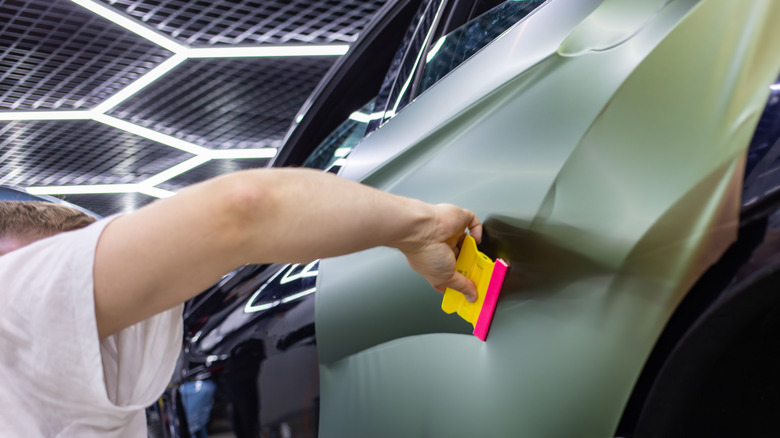Wrapping vs. Painting: Weighing the Pros and Cons

Cost Considerations: Wraps vs. Paint Jobs
When it comes to finishing off a project car, there are multiple options available. While traditional paint jobs have long been the go-to choice for many enthusiasts, car wraps have gained popularity in recent years. This is especially true among those who want to customize their vehicles without committing to a permanent change. Automakers like Ford have even adopted this approach, offering limited editions with unique wrap finishes.
If you're considering changing your vehicle's color or working on a project car, it’s important to weigh the pros and cons of both options. While both can deliver impressive results, they come with different financial implications and maintenance requirements.
Wrapping a car is often the more affordable option, especially when compared to a professional paint job. The cost of either method depends on several factors, including the size of the vehicle, the complexity of the design, and the amount of preparation needed. For example, wrapping a high-end model like a Lamborghini Urus in a bold color will be more expensive than wrapping a smaller car like a Mini Cooper. However, in general, paint jobs tend to be pricier due to the extensive prep work involved, such as sanding and baking the paint in an oven. Wraps, on the other hand, require less time and effort during the initial application process, making them a more budget-friendly alternative.
Removal Process: A Key Differentiator
One major advantage of car wraps is that they are easier to remove compared to painted finishes. If you plan to change your car's look frequently, a wrap allows for a simpler and quicker transition. Removing paint requires meticulous sanding, which can be time-consuming and potentially damaging if not done correctly. In contrast, removing a wrap typically involves using a heat gun to loosen the adhesive, allowing the wrap to be peeled away without harming the original paint underneath.
However, it's worth noting that some complex designs or detailed body panels may make removal more challenging. Still, the overall process is significantly less invasive than stripping paint, making wraps a practical choice for those who want flexibility in their vehicle's appearance.
Maintenance Challenges for Both Options
Once your car has been wrapped or painted, maintaining its appearance becomes a priority. Paint is vulnerable to scratches, chips, and cracks from everyday wear and tear. Items like rocks, zippers, and jewelry can easily damage the finish. On the other hand, wraps are more resistant to physical damage but are more susceptible to environmental factors. Prolonged exposure to sunlight, extreme temperatures, and wet weather can cause fading or peeling over time.
Maintaining a wrapped car also requires proper care, such as regular cleaning and avoiding harsh conditions. Similarly, painted cars benefit from specialized shampoos, waxes, and sealants that help preserve the finish. Both options demand attention and effort to keep the vehicle looking its best.
Customization and Artistic Expression
When it comes to customization, car wraps offer a wide range of possibilities. From matte and gloss finishes to chrome and carbon fiber effects, wraps allow for creative expression without the need for extensive labor. They also provide the ability to experiment with unique patterns and designs at a fraction of the cost of a custom paint job.
However, custom paintwork has its own appeal. It showcases the skill and dedication of the painter, often resulting in one-of-a-kind finishes that reflect the artist’s vision. While wraps may be easier to achieve, the satisfaction of a flawless paint job is something many enthusiasts value highly.
Ultimately, the decision between a wrap and a paint job depends on personal preferences, budget, and long-term goals. Both options have their advantages and challenges, making it essential to consider all factors before making a final choice.
Post a Comment for "Wrapping vs. Painting: Weighing the Pros and Cons"
Post a Comment